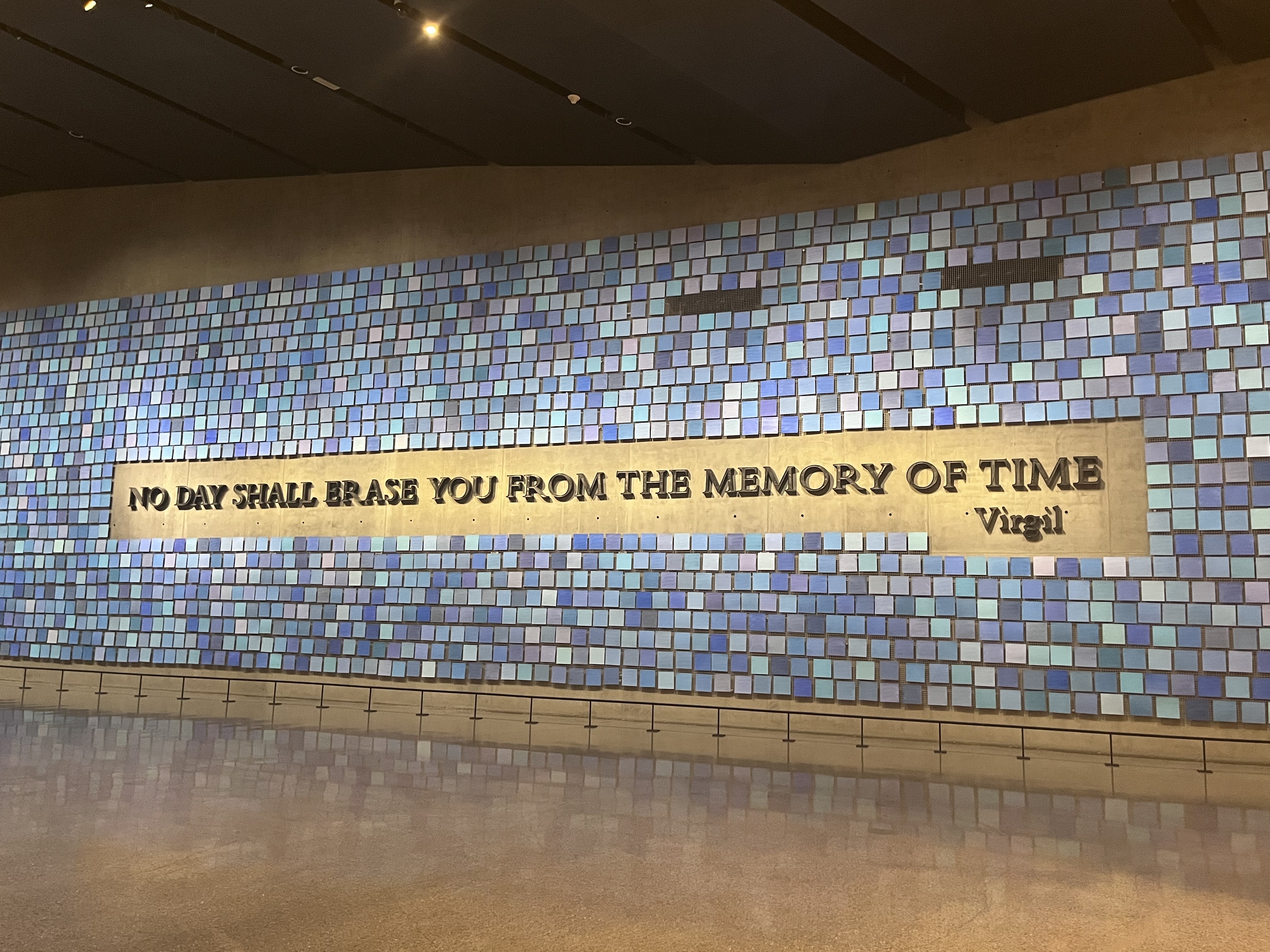My Visit to the 9/11 Memorial & Museum

Since I first started this blog post, I have decided to publish it in three parts because it is only now I realise the range of emotions I experienced at the time.
The feature image is the only pictures of the 9/11 Memorial and Museum I will use in each blog article. There are two reasons for this: first, it's easy to find images of the memorial and museum on Google, and second, I'm not sure how I feel about posting pictures of my visit right now as I'm still processing my visit.
The 9/11 disaster is well-known throughout the world; it was one of those moments when people remember where they were and what they were doing when the terrible news was announced. As a young child, I recall standing in front of my parents TV, believing I was watching a movie clip, only to have my mother tell me that it was real.
Since understanding the term dark tourism, I’ve always wanted to visit the memorial and museum to honour the people who died and to see from an academic perspective of how successful they have balanced educating visitors with memorialising victims.
Me and my partner made the point to visit the museum before paying our respects at the infinity pools. We began our visit by going through airport-style security in the concourse lobby, which immediately gave the place a sense of significance. As we followed the signs to the main exhibits we were given the opportunity to watch a 30-minute video in the auditorium of the museum.
As we were informed that the museum had put this short film together, we assumed that it would focus on the stories of those who survived the tragedy. However, it was very much the opposite; although it touched on the events of 9/11, it focused more on the process of finding and killing Osama Bin Laden. The film made me reevaluate my expectations of my visit , but it also made me realise how crucial it was for America to demonstrate to the world that they were the ones who brought the man who killed so many people to justice.
Following the video, we made our way down the first flight of stairs to the concourse lobby, we were met with a pair of 80-foot steel columns that had originally been a part of the twin towers facade and formed the gothic arches of the tower bases. Although this made me feel a senses of strength for the survivors, it also got me thinking about the symbology between the columns and the twin towers, which are a prominent part of the museum and serve as the front image on their map, making me consider how the towers were once an imposing feature of the New York skyline.
There is an information desk in the concourse lobby where you can borrow an audio headset for the duration of your visit, but my partner and I decided to explore and read the exhibits instead. We made our way past the information desk to the ramp, known also as the introduction exhibition.
The first thing we saw was a photograph of the New York skyline captured at 8:30 a.m. on the day of the attack, showing the Twin Towers gleaming in the morning sun. Walking on there was a map showing where each of the planes hit that morning, this made me consider that this was a strategically planned attack. As we made our way further down the ramp, there were photos from the day of people witnessing the attack, faces of clear horror and shock. A section of the ramp overlooks the foundation level. As we stood here, we realised how large the exhibit area was, which further increased our sense of apprehension.
As we proceed further down the ramp, a piece of wreckage from one of the towers came into view, having been attached to the wall to span each of the levels of the museum. I’m unsure if it was the wreckage’s twisted and deformed look or knowing that this wasn’t supposed to be in a museum, that it made me feel uncomfortable. Just before we made our way down to the lower level, projected images of posts of missing people are displayed on the wall, making me consider the aftermath of the disaster and how areas around the disaster would have looked like billboards of the missing.
As I come to the end of the ramp and made my way down the escalator, there is what was once a set of stairs that belonged to the north side of the world trade centre plaza, now known as the Survivors’ Stairs. Hundreds of people would have escaped down these stairs on the day of the attack as the North Tower collapsed. It was the New York Landmarks Conservancy and survivors that helped in the stairs being preserved. This set of stairs not only symbolises the individuals that survived but demonstrates that their voices were heard in the aftermath of the disaster. Should survivors not have shared their personal stories, such remnants might not have been considered important.
Having reached the lower foundation level in the section known as Memorial Hall we experienced this immediate sense of calm. The words "No Day Shall Erase You from the Memory of Time" were displayed on the back wall across from the Survivors' Stairs, surrounded by blue tiles. I don't know if the blue tiles or it was the wording that made me consider that the entire museum as a memorial. This calm was immediately broken as we continued are path and encountered more than just the debris from the disaster.
Part two of my visit will follow in a separate blog post.
